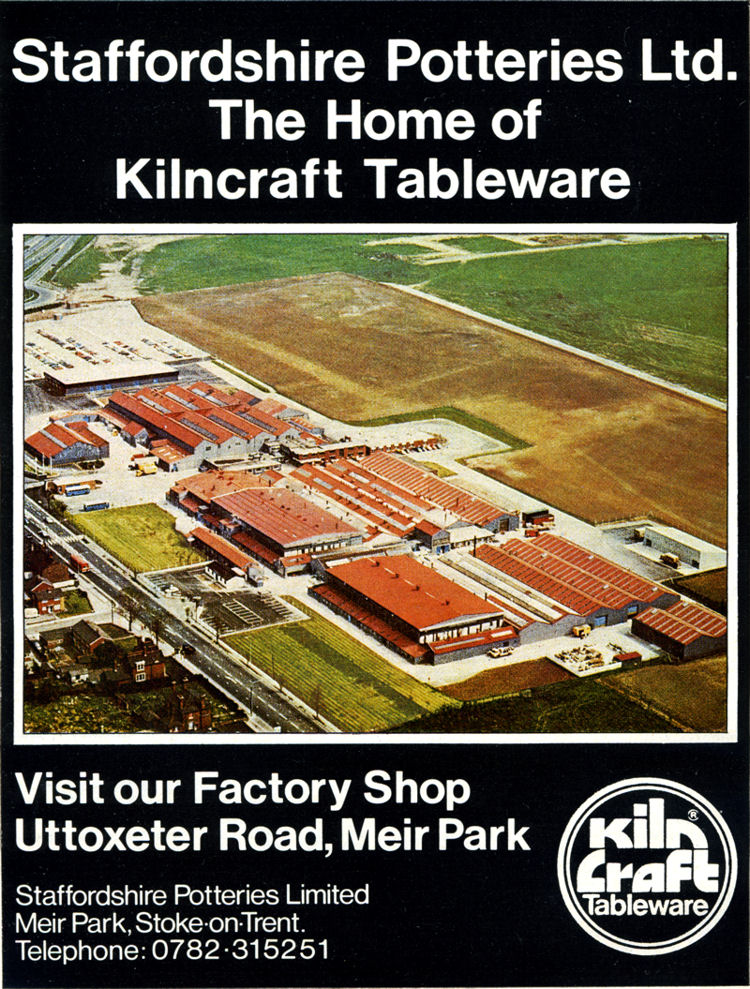![]()
|
|
|
|
|
Stoke-on-Trent - Advert of the week |
Potworks of the Week
Staffordshire Potteries Ltd - 1977

Staffordshire Potteries Limited - Kilncraft Tableware
from the 1977 - City of Stoke-on-Trent Handbook
|
STAFFORDSHIRE
POTTERIES LIMITED of Meir Park at
Stoke-on-Trent are manufacturers of Kilncraft tableware, dinnerware, tea
and coffee ware and coffee mugs. This is one of the largest units in the
area and over a million pieces a week are produced. The policy of the
company is to produce products of good quality and design, well packaged
and at competitive prices. from the 1977 - City of Stoke-on-Trent Handbook
Staffordshire Potteries Limited grew out of the Keele Street Pottery Group – a company which had grown through acquisition of several smaller local firms. The disused 38 acre Meir Airport provided the opportunity to gradually develop production on that site and by 1963 most operations were located there.
During the 1960s and 1970s the company concentrated on the production of mugs, kitchen and dinner wares. The Kilncraft brand name was introduced in 1972 and introduced a new range of modern shapes, colours and surface decorations, such as the Bramble and Bacchus ranges. This range was so successful that the name and trade mark was adopted as the corporate symbol for Staffordshire Potteries Ltd. In 1979 the company acquired Royal Winton, who were successful manufacturers of vases, giftware and planters. In 1981 a new range of red stoneware ‘cook and serve’ dinner wares and cookwares was produced, specially designed for microwave ovens. "Designed for practical cooking and elegant serving." (Staffordshire Potteries 1982 catalogue) However, by 1983, this range described as "rustic stoneware style", had been abandoned in favour of more delicate, pastel colours and both freelance and in-house designers were being used. (Tableware International October 1982 p.14-17)
In 1986 the company was taken over by Coloroll Group of Manchester. This Group also acquired Biltons Tableware of London Road, Stoke-on-Trent. This activity made Coloroll overnight a major player in the manufacture of earthenware in Stoke-on-Trent.
|